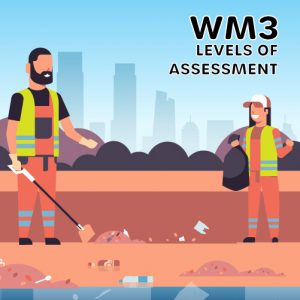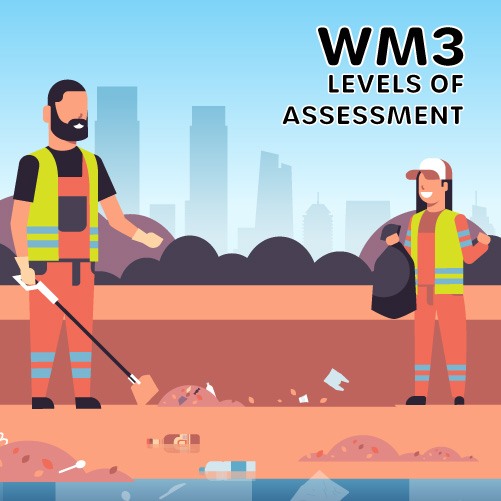What Are The WM3 Testing Levels of Assessment?

We previously outlined what a WM3 Assessment is and how you can adhere to UK WM3 standards and classify waste correctly.
WAC Testing results can help inform a WM3 Assessment but it is very important to remember that other substances may have a requirement for analysis, in order to fully complete a WM3.
This classification would then help to inform where or what can happen to the waste to ensure it’s legal transportation and its final disposal and/or recovery.
In this article, we’ll describe the levels of assessment for a WM3 Test.
The WM3 Testing level is the type and frequency of investigation required.
This is largely determined by how much information is already available and how much is unknown regarding the waste.
WM3 states the levels of assessment can encompass each of the following:
Basic (Comprehensive) Characterisation
This is a thorough initial investigation of a waste, considering the key aspects in this chapter, to support the development of a compliance testing programme. These are normally required:
- Initially, or periodically, where a process or activity regularly produces waste, (for example the outputs of a waste treatment process), and/or
- Where many of the relevant factors (for example nature and causes of variability) are unknown
Experts In WM3 Testing
With our WM3 Testing expertise at ECL, we can complete a comprehensive characterisation, by taking an initial few samples from key points in a process and screening the waste materials for a large suite of chemicals to determine the composition of the waste, the WM3 process is carried out.
We then obtain an EWC waste code based on the waste material on that occasion.
Information gathered from this stage is used to develop a sampling programme for compliance testing, i.e. identifying what points of the process will require further sampling and assessing how much variability there is in the waste produced.
One of our key areas of focus during a WM3 Test is to look at whether the compositions of the materials are highly variable.
We would assess the statistical mean of the concentrations against the thresholds, we can use our skills, expertise and statistical confidence that may lead to previous one-off testing that deemed the waste as hazardous may now after further testing be classed as non-hazardous.
This level of WM3 Testing can prove very fruitful for our clients where non-hazardous waste has been incorrectly identified as hazardous.
Compliance Testing
This process is the routine sampling and assessment of waste or wastes, for example, to compare the concentrations of hazardous substances to hazardous waste thresholds. This is likely to be appropriate:
- For processes or activities that regularly produce waste where basic characterisation has already provided sufficient information on the relevant factors (for example, to identify subpopulations), or
- For one-off wastes of a type that is well characterised
Compliance WM3 Testing
In order for us to be able to complete Compliance WM3 Testing, we must first carry out the basic characterisation which will have identified the process inputs and waste ‘populations’.
This could be different streams of waste e.g. wood with coatings and ‘raw’ wood wastes being handled separately, as each could potentially have a different EWC classification.
A routine sampling/assessment would then be undertaken to check the EWC Classification is still correct.
The lab analysis suite could also be revised based on the previous testing so that we only test for the substances we know/are likely to be within the waste.
On-Site Verification
Checks at any point in the waste chain, using ‘quick check’ methods to confirm specific information obtained from compliance testing or included on the waste paperwork. These are confirmatory checks only, not a stand-alone hazardous waste assessment and might for example include:
- Identification of visually non-conforming wastes in bulk containers
- A check of key relevant characteristic, e.g. pH or a metal concentration
On-Site WM3 Test Verification
With on-site verification, we are available to advise the best way for you to move forward and carry out on-site verification.
For example, we could provide visual inspections of the waste materials, our experienced team are always here to give clear guidance of what to inspect and how to identify changes in the waste.
Experts In WM3 Tests and the Classification of Waste
ECL always aims to help clients with the difficult decisions they need to take and to work with them through the implementation of those decisions to achieve optimum success.
Whether you’re a small business or a large multi-national company looking to improve or expand, ECL can help.
Fill out our ECL Enquiry Form or call us on 01443 841760 for any queries regarding Planning Applications, WM3 Assessments, Waste Classification, and Site Investigation Surveys

